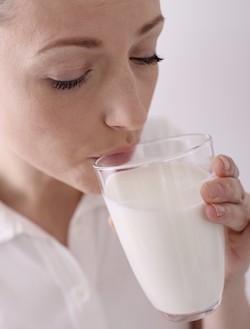There is an ongoing debate about the nutritional value of both A1 and A2 milk.
Growing number of studies from top milk-producing countries Australia, New Zealand, and some European nations enumerate the benefits of A2 milk and the health risks associated with continuous consumption of A1 milk.
This article will look at the differences between A1 and A2 milk, as well as available evidence that support the A1 vs A2 debate.
Quick Navigation
What Is Wrong with A1 Milk?
At present, there are two types of cow’s milk available in the market, A1 and A2 milk.
The majority of cows that are being raised in the United States and other parts of the globe are A1 variety.
Milk produced by A1 cows supposedly produces opiate-like effects resulting in the development of mild to serious medical conditions (2).
Prominent professor Bob Elliot from the University of Auckland claims that a switch to A2 milk can ultimately solve all problems that 1 in every 4 Americans have in relation to dairy consumption (4).
The Difference Between A1 and A2 Milk
The protein component in milk is made up of up to 80% casein (1).
Milk has several types of casein and beta casein is the second most common type casein in cow’s milk. Beta-casein comes in 13 different forms (5).

Source: Medifit Bilogicals
- A1 beta-casein comes from the most common cow breed that originated in Australia, United States, and Northern Europe. Holstein, Friesian, Ayrshire, and British Shorthorn features A1 beta-casein genetic material. A1 beta-casein can be found on all commercially-prepared milk.
- A2 beta-casein is protein found in milk produced by ‘old-fashioned’ cows like the Jersey, Charolais, Guernsey, and Limousin. Milk produced by other mammals such as those from human, goat, and sheep is similar to A2 dairy milk mainly due to the presence of proline (6 ,7).
A1 is considered a genetic mutation that results in the production of the compound BCM7 assumed to be causing the development of unwanted health conditions and illnesses among consumers.
When Did the A1 Mutation Start?

The A1 gene mutation began hundreds of years ago from Holstein cow breed that was then passed onto other breeds (8).
This mutation of the A1 beta-casein proved to be highly beneficial to dairy farmers who wanted to increase milk production without the added costs.
A2 milk is found in milk and dairy products produced by older cow breeds, have not been manipulated in any way.
Thus many regard it as the better type of casein protein. It is found in milk we consume along with A1 milk.
A2 milk is produced by A2 Milk Company, and contains no A1 beta-casein.
KEY POINT: The difference between A1 and A2 is in the amino acid chain number 67. At this position, A2 features proline whilst A1 is linked with histidine.
This mutation in the amino acid chain link of A1 milk is supposed to cause adverse effects in humans, whilst making A2 milk the healthier option.
For more information regarding the differences between A1 and A2 milk, please visit AuthorityDiet.com.